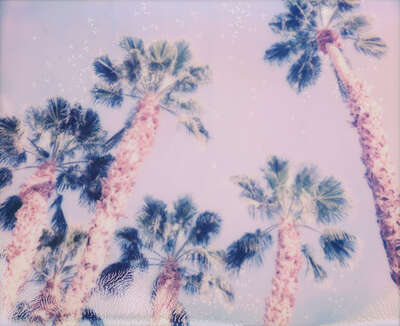

- Exclusive offers
- Inspiring new releases
- Personal invitations to Art Events


A trailer park in the Southern California desert. Shimmering sunlight, brightly coloured wigs, and striking props. The very sight of “The Muse” or “A Vision you can’t capture” brings entire… Read more
Intro Bio Exhibitions Video




























| 1968 | Born in Cuxhaven, Germany |
| 1991-1996 | Studied Photography at Folkwang University of the Arts, Essen, Germany |
| Lives and works in Los Angeles and Berlin |
| DZ Bank, Frankfurt, Germany | |
| Dreyfuss, Basel, Switzerland | |
| Schmidt Bank, Regensburg, Germany | |
| Holtzbrinck Verlag, Stuttgart, Germany | |
| The Sander Collection, Berlin, Germany | |
| Ocean Foundation, Zurich, Switzerland | |
| Germanisches Nationalmuseum, Nuremberg, Germany | |
| Impossible Collection, Vienna, Austria | |
| Collection Luc LaRochelle, Montreal, Canada | |
| The Canton of Zug Art Collection, Switzerland |
| 2014 | Instantdreams, De Re Gallery, Los Angeles, USA |
| Stefanie Schneider, c.art-Galerie Bregenz, Austria | |
| 2013 | The girl behind the white picket fence, Galerie Catherine et André Hug, Paris, France |
| 2012 | Stranger than Paradise, Christian Hohmann Fine Art, Palm Desert, USA |
| Stefanie Schneider, Gallery at Cliff Lede Vineyards, Napa Valley, USA | |
| 2011 | California Dreaming, ROLLO Contemporary, London, UK |
| 2010 | Stefanie Schneider, Galerie Walter Keller, Zurich, Switzerland |
| Instant Dreams, Frank Picture Gallery, Santa Monica, USA | |
| 2009 | 29 Palms, CA, Moravian Gallery, Brno, Czech Republic |
| 2008 | Sidewinder, Städtische Galerie am Mozartplatz, Salzburg, Austria |
| 2006 | Wastelands, Zephyr/Reiss-Engelhorn-Museen, Mannheim, Germany |
| 2007 | Wastelands, Kunstverein Recklinghausen, Germany |
| 2005 | Last Picture Show, Galerie Caprice Horn, Berlin, Germany |
| 2004 | Suburbia, Galerie Kuttner Siebert, Berlin, Germany |
| Stefanie Schneider, Galerie Michael Sturm, Stuttgart, Germany |
| 2014 | Nude, Pop-up Art Gallery, Berlin, Germany |
| 2013 | Images for Images, GASK – Gallery of the Central Bohemian Region, Kutná Hora, Czech Republic |
| The Polaroid Years: Instant Photography and Experimentation, Frances Lehman Loeb Art Center, Poughkeepsie, USA | |
| Road Atlas - Straßenfotografie, DZ Bank Collection, Kunsthalle Erfurt, Germany | |
| 2012 | Polaroid (Im)Possible – The Westlicht Collection, NRW Forum Kultur und Wirtschaft, Düsseldorf, Germany |
| 2010 | Mapping Worlds: Welten verstehen – Aufbruch in die Gegenwart, 8. Internationale Foto-Triennale, Esslingen, Germany |
| 2009 | True Lies, Kunsthaus Essen, Germany |
| 2008 | Les Rencontres d'Arles - Photo Festival South of France, curated by Christian Lacroix, nominated for the Discovery Award |
| 2007 | Breaking the Waves, ArtHaus Gallery, Los Angeles, USA |
| 2006 | Artists for Tichy - Tichy for Artists, Museum Moderner Kunst, Passau, Germany |
| Out of the Camera: Analoge Fotografie im digitalen Zeitalter, Kunstverein Bielefeld, Germany | |
| Land in Translation, Riverside Museum, Riverside, USA | |
| 2005 | Zaunwelten, Museum für Kommunikation, Berlin, Germany |
| Polaroid als Geste, Museum für Photografie, Brunswick, Germany | |
| 2002 | Realities and Histoires d´amour, Kunstverein Ulm, Germany |
| 2001 | Night on Earth, Kunsthalle Münster, Germany |
Visit LUMAS USA!
Delivery to your country is not possible from this site.
If you would like to place an order, please visit LUMAS USA.